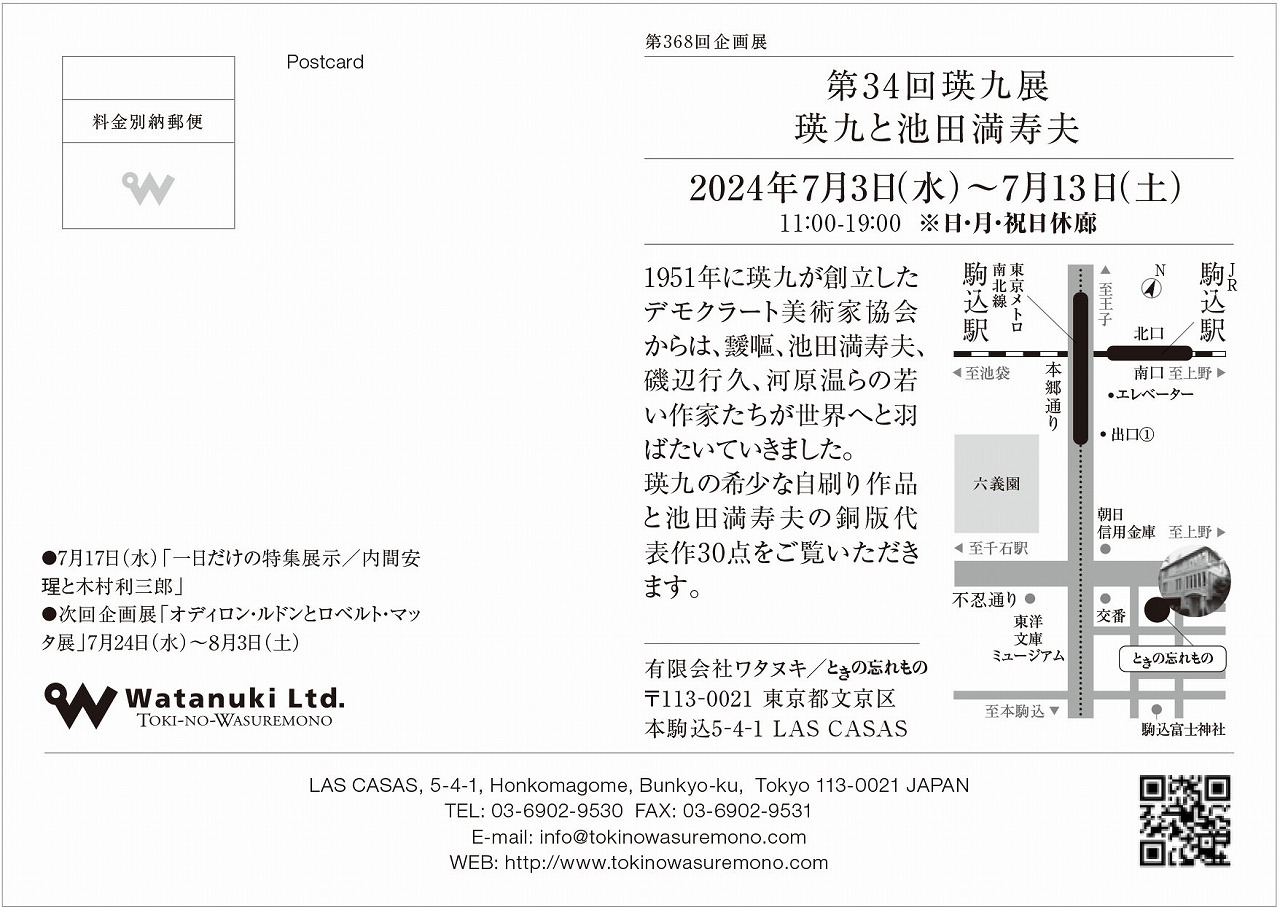33rd Q Ei Exhibition / Q Ei and Masuo IkedaSchedule: July. 3 [Wed.] - July. 13 [Sat.] 2024 11:00 - 19:00 |
  *Click images to view in original size |
We will present representative prints by Q-Ei, who was a pioneer of abstract painting before World War II, and Masuo Ikeda, who often visited Eikyuu's atelier and interacted with him.
Q-Ei formed the “Democratic Artists Association” in Osaka in 1951, which greatly proclaimed anti-public exhibitions and carried the activities focused on the individual creativity.
Ikeda Masuo got to know Q-Ei and the art critic Sadajiro Kubo through Ay-O, and joined the Democrat.
He was recommended by Q-Ei to start printmaking, and like Ay-O, he produced a number of prints for the “Small Collector's Association” which started from the art education movement “Creative Art Education Movement” advocated by Kubo in the 1950's. He produced over 1000 prints in his whole life.
The exhibition will feature the representative artworks of each of them, including representative works by Q-Ei 's self-printed copperplate prints “Spring” and “Bird Fairy” and Masuo Ikeda's self-printed copperplate prints “Taeko's Breakfast” and “Sacred Hand”.
Also, the Spindle tree that planted at the garden of Q-Ei 's atelier in Urawa (demolished in 2023) and the flagstone that he treaded on have been transplanted to the garden of Toki-no-Wasuremono, please take a look at them as well.
■Q Ei
Q Ei, whose early work was done under his real name of Hideo Sugita, was born in Miyazaki Prefecture in 1911. At age 15, his criticism started appearing in the art magazines "Atelier" and "Mizue". Q Ei’s first collection of photo-dessins, was published in 1936 as "The Reason for Sleep" (Nemuri No Riyu). In 1937, he set up the art organization "Free Art Association" (Jiyu Bijutsu Kyokai). As to criticize the established public group and Japan art world, he set up "Democratic Artists Association" in 1951.
Q Ei had great influence among the young Japanese artists at that time such as Ay-O, Masuo IKEDA, Yukihisa ISOBE, On KAWARA, and Eikoh HOSOE. He challenged various medium such as oil paintings, photo-dessins, prints, and created a unique world of art. He died in 1960 at the age of 48.
■Masuo IKEDA
Born 1934 in Manchuria, Ikeda returned to the hometown of his mother, Nagano, in 1945. After completing high school in 1952, Ikeda moved to Tokyo and began to work as a print artist. He won consecutively in 1960, 1962, and 1964 at the Tokyo International Print Biennial, and was awarded at the 33rd Venice Biennale in 1966 in the print section. Ikeda, on his way to international fame, did not stagnate on his successes; instead he went on to reinvent his art on multiple occasions.
While Ikeda continued to work as a print artist in Tokyo and New York, he also ventured into novel writing, which eventually garnered him the prestigious Akutagawa Prize in 1977. Returning to Japan for good, Ikeda settled in Atami (Shizuoka Prefecture) where he experimented with ceramics and three-dimensional objects. He died in 1997.
 |
|
 |
|
 |
|
 |
|
 |
|
 |
|
 |
|
 |
|
 |
|
 |
|
 |
|
 |
|
 |
|
 |
|
 |
|
 |
|
 |
|
 |
|
 |
|
 |
|
 |
|
 |
|
 |
|
 |
|
 |
|
 |
|
 |
|
 |
|
 |
|
 |
|
 |
|
 |
|
 |
|
 |


